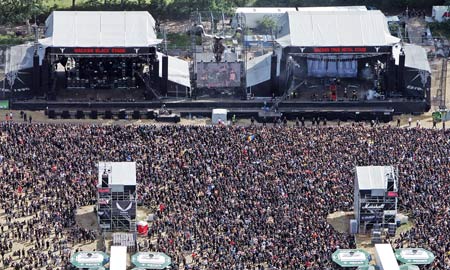Wednesday, September 29, 2010
Nordhein Westfallen Presentation
German Trivia Questions
Life in Germany
1. When and where did German scientists recently discover a new species of ape?
Answer: In Asia on Tuesday, September 21, 2010
Source: http://www.watoday.com.au/breaking-news-world/german-scientists-discover-rare-ape-species-in-asia-20100921-15lkn.html
2. What city is known as the salt capital of Germany? When did the salt production end?
Answer: Lüneburg, a German city in the state of Lower Saxony, is known as the salt capital of Germany. It was not until 1980 that the production of salt in the Lüneburg Saline finally closed.
Source: http://worthgem.blogspot.com/2010/09/german-salt-museum-at-luneburg.html
3. What type of schooling is forbidden?
Answer: Homeschooling
Source: www.german-way.com/educ.html
German History
1. What was the difference in population in Germany from 1939 to 1946?
Answer: 4 million less people from 1939 to 1946
2. In the early and middle eleventh century the Saxon kings were able to defeat which Germanic tribes thus strengthening the Elbe Saale frontier?
Answer: The Magyars and the Slavs
3. What Germanic tribe held onto their tradition of worshiping heathen gods the longest?
Answer: The Saxons
German Media
1. What date did the "television contract" (Fernsehvertrag) get signed?
Answer: March 27, 1953
Source: pg 91 of "The Mass Media of the German Speaking Country" by John Sandford
2. The Deutsche Welle first began broadcasting is what year?
Answer: 1953
Source: pg 39 of "The Mass Media of the German Speaking Country" by John Sandford
3. What German newsmagazine is on the rise while its predecessor is on the decline?
Answer: The Focus is on the rise while Der Spiegel is on the decline.
Source: http://www.germanculture.com.ua/library/facts/bl_newspapers.htm
German States: Bavaria
1. Who are the three primary Germanic tribes to inhabit Bavaria in history?
Answer: Bavarians, Franks, and Nordgau
2. Pope Benedict was born in town of Marktl Bavaria. Where did he live his adolescence?
Answer: Traunstein
Source: http://www.vatican.va/holy_father/benedict_xvi/biography/documents/hf_ben-xvi_bio_20050419_short-biography_en.html
3. The Hofbrauhaus is a famous beer hall in Munich Bavaria. What family still owns and operates this historic site?
Answer: The Gerdas
Source: http://www.aviewoncities.com/munich/hofbrauhaus.htm
German States: Schleswig-Holstein
1. Where was the chief base for the Third Reich's navy operations?
Answer: Kiel
Source: pg 259-260 of “Discover Germany” by Jack Altman
2. Schleswig-Holstein was part of Denmark until what year?
Answer: 1866
Source: pg 259-260 of “Discover Germany” by Jack Altman
3. What is the world famous annual rock fest that takes place in Schleswig-Holstein?
Answer: Wacken Open Air
Source: http://en.wikipedia.org/wiki/North_Rhine-Westphalia
German States: Westphalia
1. The Landtag of North Rhine-Westphalia convenes to which city in Westphalia?
Answer: Dusseldorf
Source: http://en.wikipedia.org/wiki/Schleswig-Holstein
2. Where can the best soil in North Rhine-Westphalia be found? (specific place)
Answer: The fertile, deep loessial soil of the Köln Bay.
Source: pg 12 of “North Rhine-Westphalia” by J. A. Hellen
3. What are the names of the two broad trails, one a road the other a trading route in North Rhine-Westphalia that can be traced back to prehistoric times?
Answer: Rhine (Road) and Hellway (Trade Route)
Source: pg 18 of “North Rhine-Westphalia” by J. A. Hellen
Berlin
1. What animal infestation did the U.S. Army eradicate in Berlin?
Answer: Rats
Source: “The Berlin Wall: How it Rose and Why it Fell” by Doris M. Epler
2. What is this and what does it stand for? (Picture Link: http://www.planetware.com/i/photo/berlin-d1434.jpg)
Answer: The Soviet War Memorial; it was built in memory of all the Soviet soldiers who died in the battle of the conquest of Berlin. (WWII)
Source: “The Berlin Wall: How it Rose and Why it Fell” by Doris M. Epler
3. What was the full birth name of the mayor of West Berlin who was in office during JFK’s “Ich bin ein Berliner Speech?”
Answer: Herbert Ernst Karl Frahm
Final Category – Poetry & Cars
1. “At Bacharach on the Rhine, Lorelei is lingering” is the English translation of the first line of whose poem?
Answer: Hans Rudolf Hilty – poem’s title Lorelei
Source: pg 131 of Contemporary Germany Poetry: An Anthology
2. “I greet Berlin as three times
I band my head, three times
against one of the walls” is the English translation of whose stanza?
Answer: Günter Grass – poem’s title Brandmauern
Source: pg 147 of Contemporary Germany Poetry: An Anthology
3. How does the BMW logo represent the company’s history?
Answer: Originally, the Bayerische Motoren Werke (BMW or “Bavarian Motor Works”) was a German airplane engine manufacturer, which later came to focus on making sweet cars. The BMW Logo is supposed to represent a white airplane-propeller against the blue sky; a reflection of the company’s beginnings in the early days of flight.
Monday, September 20, 2010
German Print Media Reviewed
German Radio Stations
Wednesday, September 15, 2010
Schwabische Alb Presentation
Note: you'll need to actually be in class to really see the presenation as there is no written explanations in the PowerPoint.
Saturday, September 11, 2010
Classmates' Berlin Presentations
1. Berlin's Nightlife
2. Berlin During WWII
3. Tourism Attractions in Berlin
4. Berlin Structures
5. Life in Berlin: Then and Now
6. Now and In the Past U-Bahn and S-Bahn
7. Berlin Music In the Past vs Today
8. Berlin Sports and Nightlife
9. The Reichstag
10. Art and Culture in the 1920's
Wednesday, September 8, 2010
The Reichstag
Wednesday, September 1, 2010
World Heritage Sites: The Upper Middle Rhine Valley AND The Sixteen German States
Sources:
http://en.wikipedia.org/wiki/States_of_Germany
http://beatcrave.frsucrave.netdna-cdn.com/wp-content/uploads/2009/07/01020125823700.jpg
http://www.musikreviews.de/static/images/common/live/2008/february/woa_2007_teil3_1.jpg
http://farm3.static.flickr.com/2050/2108134105_8091687fd4.jpg?v=0





